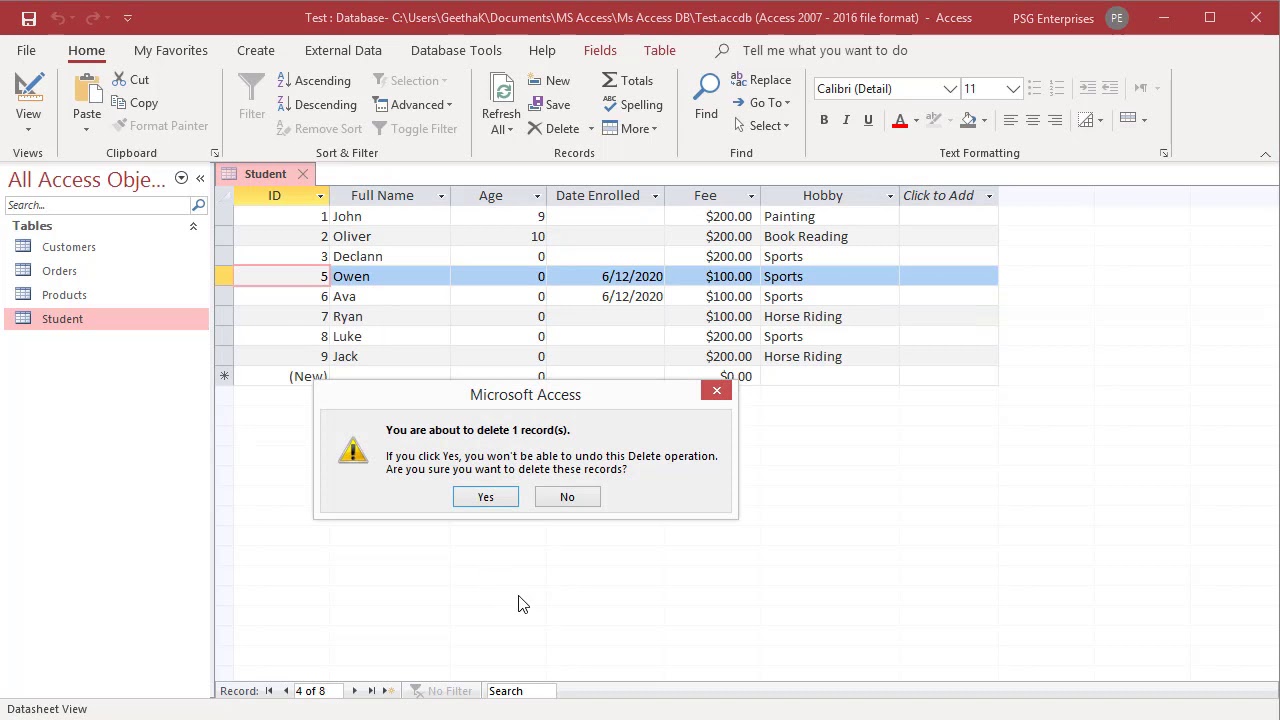
In the realm of database management, the ability to delete table records is a critical aspect of maintaining data accuracy, cleanliness, and relevance. Microsoft Access 2000, a powerful relational database management system (RDBMS), equips users with robust tools and features for managing table records with precision and efficiency. In this extensive guide, we’ll embark on a comprehensive exploration of deleting table records in Access 2000, unraveling various methods, considerations, and best practices to empower users in their data deletion endeavors.
Understanding Table Records Deletion
Before diving into the intricacies of deleting table records in Access 2000, it’s crucial to comprehend the significance of table records within the database ecosystem. In Access 2000, a table record, also known as a row or tuple, represents a single instance or entry of data within a table. Each record comprises fields that encapsulate specific attributes or properties of the data being stored. For example, in a table containing customer information, each record might encompass fields such as “Customer ID,” “Name,” “Address,” and “Phone Number.”
Methods of Deleting Table Records
Access 2000 offers users a variety of methods for deleting table records, catering to diverse preferences and workflow requirements:
- Datasheet View: The datasheet view serves as a primary interface for interacting with table records in Access 2000. Users can navigate to the desired record within the datasheet and initiate the deletion process by selecting the entire row or specific cells corresponding to the record. Access 2000 facilitates seamless deletion of table records directly within the datasheet view, ensuring efficient data management.
- Query-Based Deletion: Access 2000 enables users to perform record deletion operations using queries, providing a versatile and powerful approach to data manipulation. Users can create delete queries to target specific records based on defined criteria, such as filtering by field values or using logical expressions. Delete queries facilitate bulk deletion of table records, streamlining data management tasks.
- Form-Based Deletion: Forms offer a structured and user-friendly environment for managing table records in Access 2000. Users can design custom forms tailored to their data deletion needs, incorporating controls such as buttons or checkboxes to initiate deletion actions. Form-based deletion empowers users to implement validation checks and confirmation prompts, enhancing data integrity and safety.
- VBA (Visual Basic for Applications): Advanced users and developers can leverage VBA programming in Access 2000 to create custom deletion routines and automation scripts. VBA enables users to implement complex deletion logic, handle error conditions, and integrate with external systems or processes. By harnessing the power of VBA, users can customize and extend Access 2000’s functionality for specific data deletion requirements.
Best Practices for Deleting Table Records
While deleting table records in Access 2000 is relatively straightforward, adhering to best practices can help minimize risks and ensure data integrity:
- Backup Data: Before initiating record deletion operations, it’s advisable to create backups of the database to safeguard against unintended data loss or corruption. Access 2000 provides built-in backup and recovery mechanisms to mitigate the impact of deletion errors or unforeseen contingencies.
- Implement Confirmations: Incorporating confirmation prompts or dialogs in deletion processes can help prevent accidental data loss and provide users with an opportunity to confirm their intentions. Access 2000 allows users to implement custom confirmation messages or prompts using macros or VBA code.
- Consider Cascade Deletes: In scenarios where tables are related through foreign key constraints, users may opt to enable cascade delete behavior to automatically delete related records when a parent record is deleted. While cascade deletes can streamline data cleanup tasks, users should exercise caution to avoid unintended data loss or integrity violations.
- Audit Trails: Maintaining audit trails or logs of deletion activities can help track changes to table records and provide accountability in data management processes. Access 2000 allows users to implement audit trail mechanisms using triggers, macros, or custom VBA code to capture deletion events and relevant metadata.
Conclusion
In conclusion, mastering the art of deleting table records in Access 2000 is essential for proficient database management and data maintenance. By leveraging the diverse methods, considerations, and best practices outlined in this guide, users can streamline the process of deleting table records, uphold data integrity and safety, and harness the full potential of Access 2000 for effective data management. Whether you’re a novice user or an experienced database administrator, proficiency in deleting table records empowers you to navigate the intricacies of database management with confidence and precision.